Influencer culture has emerged as a defining force in the entertainment industry, reshaping how content is created, marketed, and consumed. With the rise of social media, influencers have become pivotal figures who impact trends, promote products, and engage audiences in ways that traditional celebrities once dominated. Here’s an exploration of the key elements of influencer culture within the entertainment sector.
Key Elements of Influencer Culture
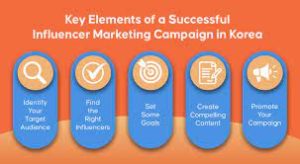
1. Rise of Social Media Influencers
- Platforms: Social media platforms like Instagram, TikTok, YouTube, and Twitch have enabled individuals to build substantial followings by sharing content related to lifestyle, fashion, beauty, gaming, and more.
- Content Diversity: Influencers create a wide range of content, including tutorials, reviews, vlogs, and live streams, catering to various interests and demographics.
2. Changing Marketing Strategies
- Brand Collaborations: Brands increasingly partner with influencers for marketing campaigns, utilizing their authentic voice to reach targeted audiences effectively.
- Affiliate Marketing: Influencers often use affiliate links to promote products, earning commissions on sales generated through their recommendations.
3. Direct Audience Engagement
- Interactivity: Influencers interact directly with followers through comments, live Q&As, and polls, fostering a sense of community and loyalty.
- Real-Time Feedback: Influencers can adapt content based on audience preferences and feedback, creating a dynamic content ecosystem.
Impact on the Entertainment Industry
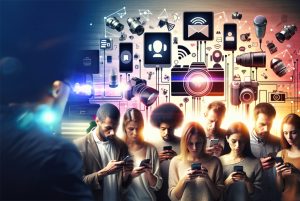
1. Talent Discovery and Development
- Pathway to Fame: Many influencers transition into traditional entertainment roles, such as acting, music, or hosting, leveraging their online popularity.
- Diverse Representation: Platforms allow underrepresented voices and talents to gain visibility, enriching the entertainment landscape.
2. Shifting Power Dynamics
- Competition with Traditional Celebrities: Influencers can rival established stars in popularity, often commanding significant attention and engagement.
- Trendsetters: Influencers can drive trends in fashion, music, and lifestyle, often influencing mainstream media and consumer behavior.
3. Content Creation and Distribution
- Democratization of Media: The barriers to entry for content creation have lowered, allowing anyone with a smartphone to produce and share high-quality content.
- Viral Marketing: Influencers can spark viral trends and challenges, driving massive engagement and brand awareness quickly.
Challenges and Criticisms
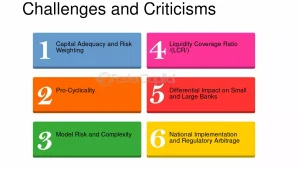
1. Authenticity and Trust Issues
- Skepticism: As influencer marketing grows, audiences may question the authenticity of endorsements, especially when influencers promote products they don’t genuinely use.
- Transparency: There is ongoing debate about the need for clear disclosure of sponsored content to maintain trust with followers.
2. Mental Health Concerns
- Pressure to Perform: Influencers often experience stress and anxiety related to maintaining their public personas, leading to mental health challenges.
- Comparison Culture: The curated nature of influencer content can foster unrealistic expectations among followers, impacting self-esteem and well-being.
3. Market Saturation
- Increased Competition: The influx of new influencers makes it challenging for individuals to stand out, leading to potential burnout.
- Algorithm Changes: Social media algorithms can impact visibility and engagement, affecting influencers’ ability to connect with their audiences consistently.
The Future of Influencer Culture
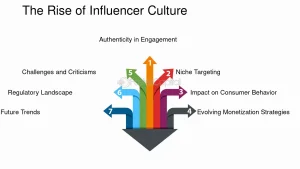
1. Integration with Traditional Media
- Collaborative Content: Expect more collaborations between influencers and traditional media entities, blurring the lines between digital and conventional entertainment.
- Influencer-Driven Projects: Influencers may produce their own shows, films, or music, directly engaging their audiences through multiple platforms.
2. Regulatory Developments
- Increased Scrutiny: As influencer marketing becomes more mainstream, regulatory bodies may impose stricter guidelines to ensure transparency and protect consumers.
- Best Practices: The industry may develop standardized practices regarding sponsorship disclosures and ethical marketing.
3. Technological Innovations
- Emerging Platforms: New social media platforms may rise, providing fresh opportunities for influencers to connect with audiences in innovative ways.
- Enhanced Content Creation Tools: Advances in technology, such as augmented reality (AR) and virtual reality (VR), will change how influencers create and share content.
Conclusion
Influencer culture has become a powerful force in the entertainment industry, transforming how content is created, marketed, and consumed. As influencers continue to shape trends and engage audiences, their role in entertainment will likely expand, presenting both opportunities and challenges. The ongoing evolution of this culture will redefine the landscape of entertainment, making it more diverse, interactive, and accessible than ever before.
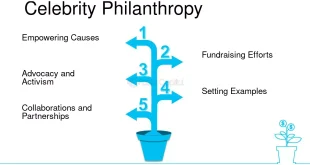

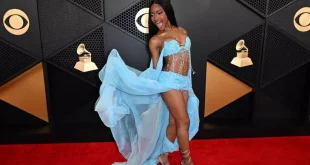
girniy